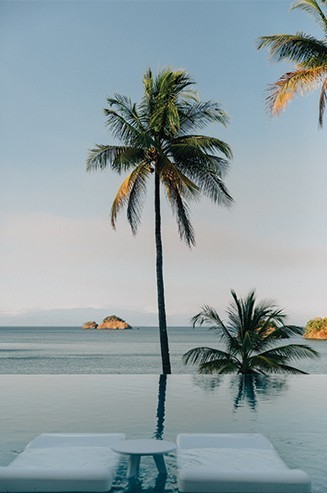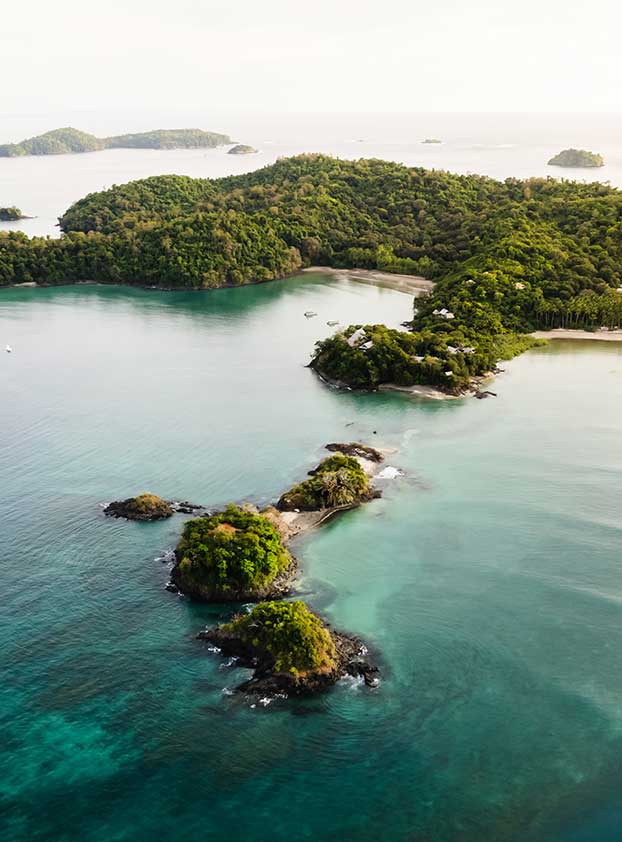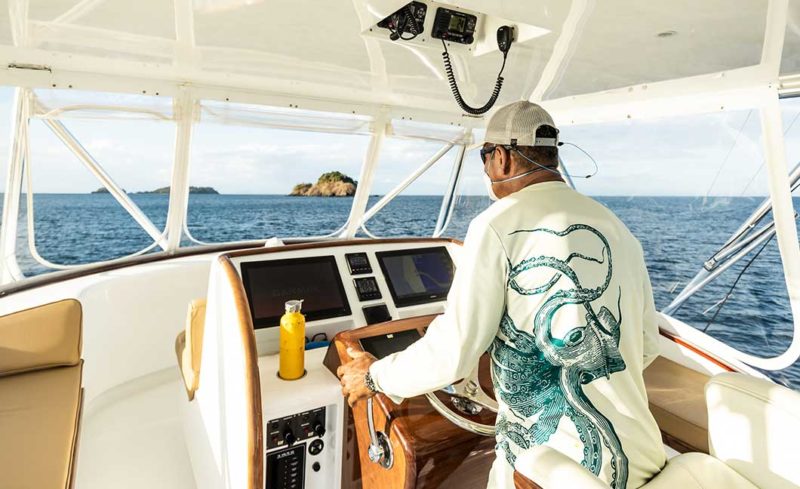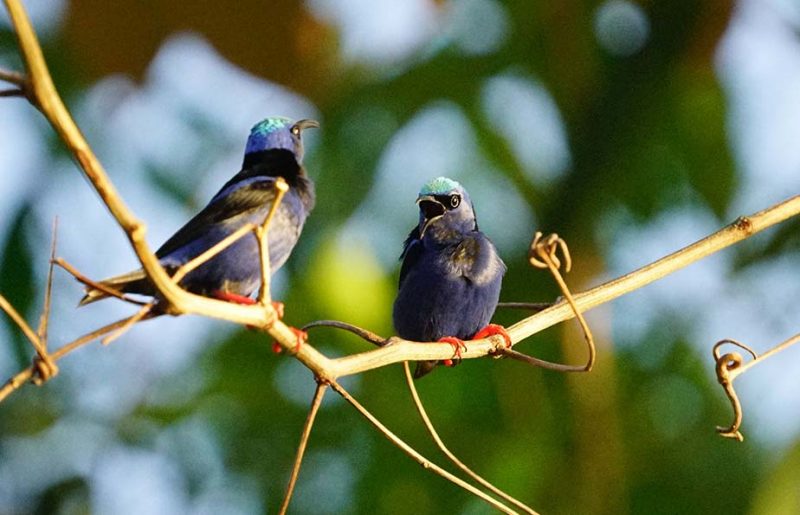Enchanted Encounters: Humpback Whales
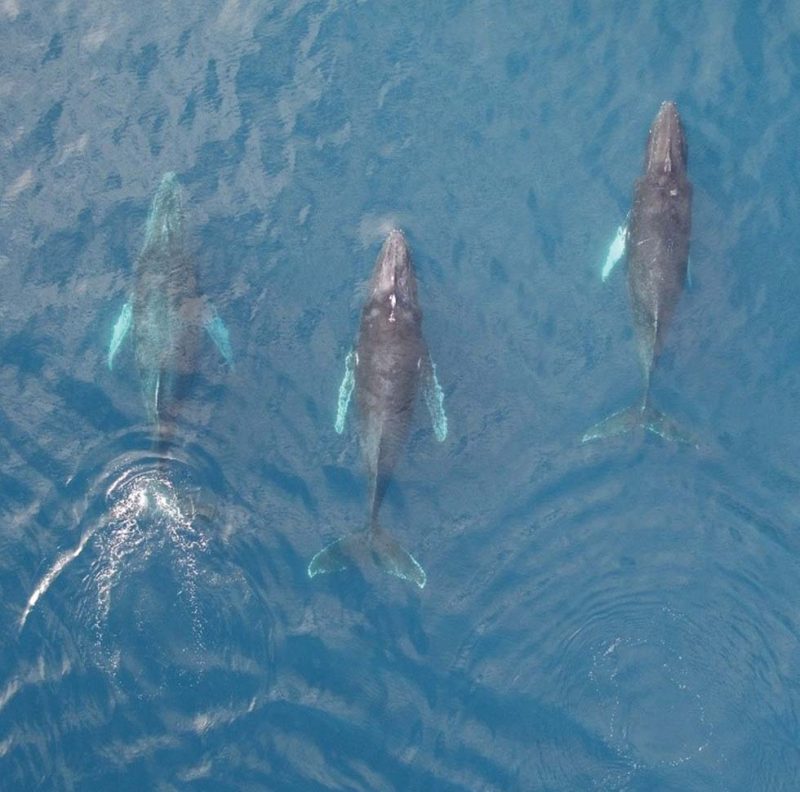
“Just this year, whales identified here were also sighted off New Zealand and most recently off New Caledonia!“
Two of the world's most spectacular natural migrations stop at Secas
F ew wildlife experiences compare to a whale encounter – a true highlight of Islas Secas’ marine safari experience. Discover more about the journey of these majestic creatures as they visit our archipelago – and learn about the whale monitoring and conservation work the Islas Secas Foundation supports through partner Panacetacea.
An Annual Pilgrimage
Throughout the year, Panama’s Gulf of Chiriqui plays host to two different populations of humpback whale. Between December and April, a small population arrives having migrated from feeding areas in the north. A much larger population can be seen between July and October, migrating from feeding areas near Antarctica and Chile.
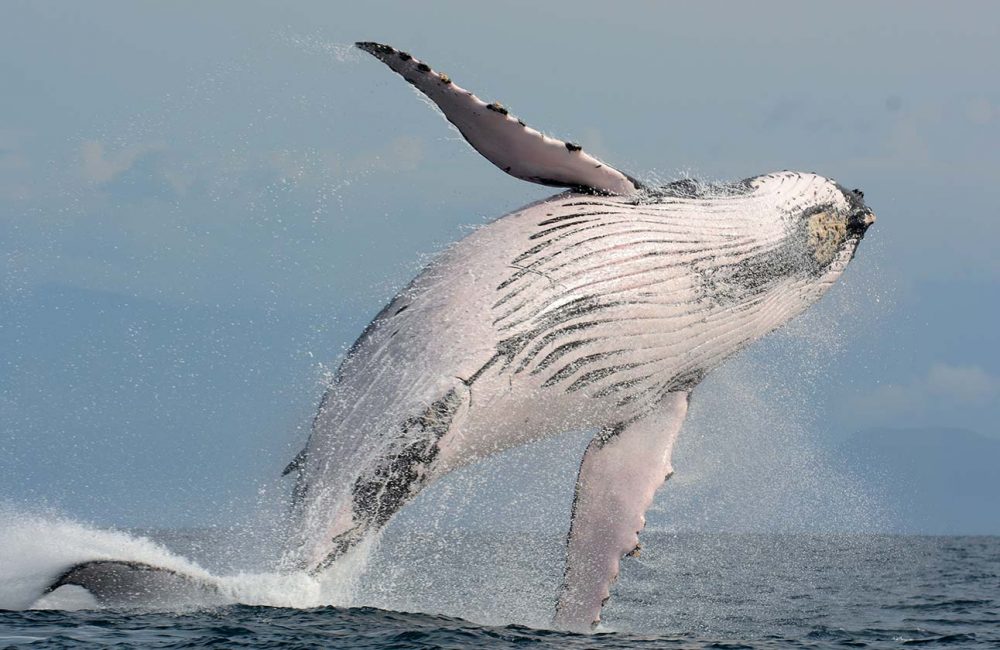
Up Close and Personal
Humpback whale populations, found in all the world’s major oceans, were greatly depleted by whaling worldwide until an international ban was enacted in 1966. Most populations have been recovering since then — including the population that visits Panama’s Gulf of Chiriqui. During whale-watching season, whales can often be seen from the resort and boat trips can be arranged to get closer to the magnificent whales. Their breaching, spy hopping, tail slapping and lob-tailing will leave you with no doubt as to why whale-watching in Panama is some of the best.
Experience the extraordinary wildlife swimming in our waters and soaring in our skies during your stay with us at Islas Secas, on our private island marine safari.
Explore here
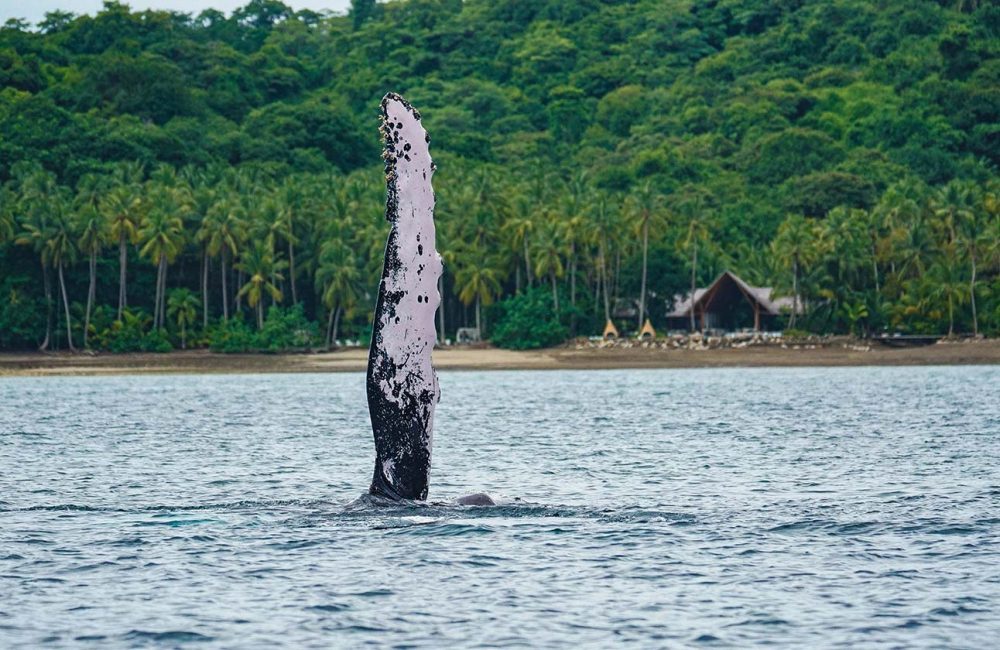
An Important Body of Research
Support from the Islas Secas Foundation has allowed Panacetacea, a scientific non-profit dedicated to the study and conservation of whales and dolphins in Panamanian waters to conduct annual humpback whale research expeditions in the Gulf of Chiriquí that include photo-ID work (using photos of the tail flukes to identify individual whales), sound recording, and biopsy sampling, to contribute to population and species mapping. This work is used to inform conservation measures through both MiAmbiente (the environmental ministry of the Panamanian government), and the International Whaling Commission (IWC). Results have also been used by MiAmbiente to inform the whale watching regulations for Panama, publish a guide in marine mammals of Panama, as well as to guide other conservation initiatives for the country.
A Critical Area to Protect
Comprehensive datasets have demonstrated that the Gulf of Chiriqui is a crucial area to protect. For one, whales here give birth to calves at a higher rate than other studied breeding areas, and the population continues to increase at a rapid rate. Also, these whales, know as part of the Southeastern distinct population segment (DPS) make some of the longest migrations of any mammal in the world, traveling between this productive breeding area off Panama and their feeding areas off Chile and Antarctica every year – and beyond. Islas Secas Foundation parter Panacetacea collaborates with Happywhale, an online citizen scientist platform that collects whale photos from both scientists and the general public. Currently, Happywhale has Panacetacea’s entire catalog in their database, and using state-of-the-art image processing algorithms can compare photo identifications from guests with other collections. This allows us to know which whales have been seen in multiple areas – even across the world. In fact, just this year, whales identified here were also sighted off New Zealand and most recently off New Caledonia (near Australia)!
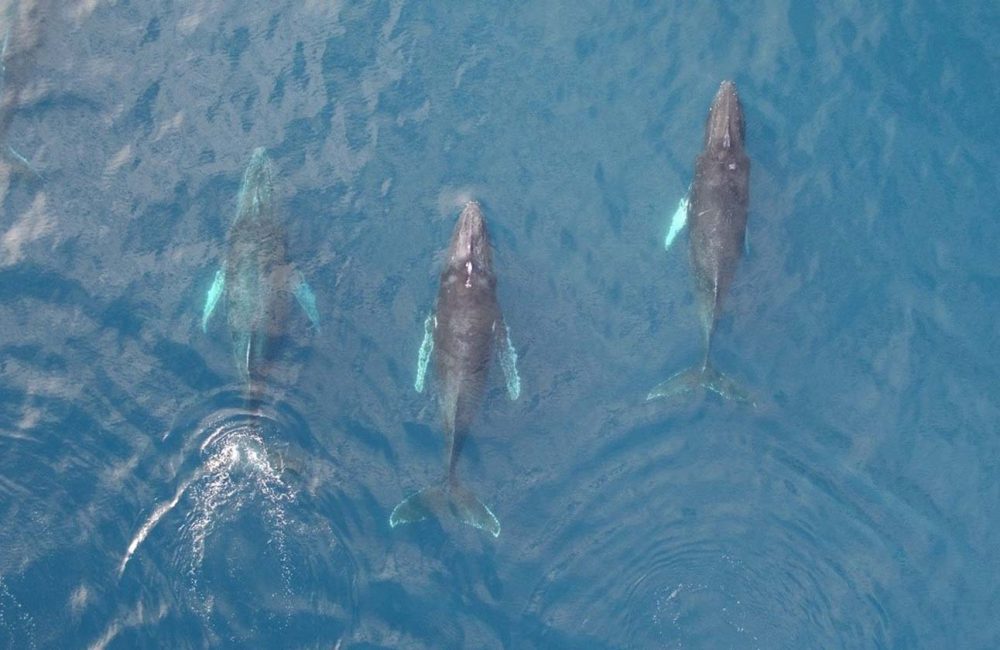
Sustainable Measures & Conservation Outcomes
Our sustainable whale-watching program follows best practices established by the United States National Oceanic and Atmospheric Administration (NOAA) and allows guests to witness these special annual visitors along their journey by boat in addition to off shore.
Excitingly, guests can share photos of their whale encounters with Panacetacea through the staff at Islas Secas, who are may able to identify individual whales from their markings. You may learn about an incredible journey.
Current potential threats to humpback whales throughout the various parts of their distribution include climate change, coastal development, acoustic pollution, entanglement in fishing nets, harassment from whale watching boats, or strikes from ships. The data from this study allows us to detect changes in the relative abundance, calving rates, habitat use and migratory patterns of this population, all of which could indicate any effects from these anthropogenic threats. Long-term data sets are the best way to detect changes in populations over time, alerting us to potential threats and informing conservation measures.
